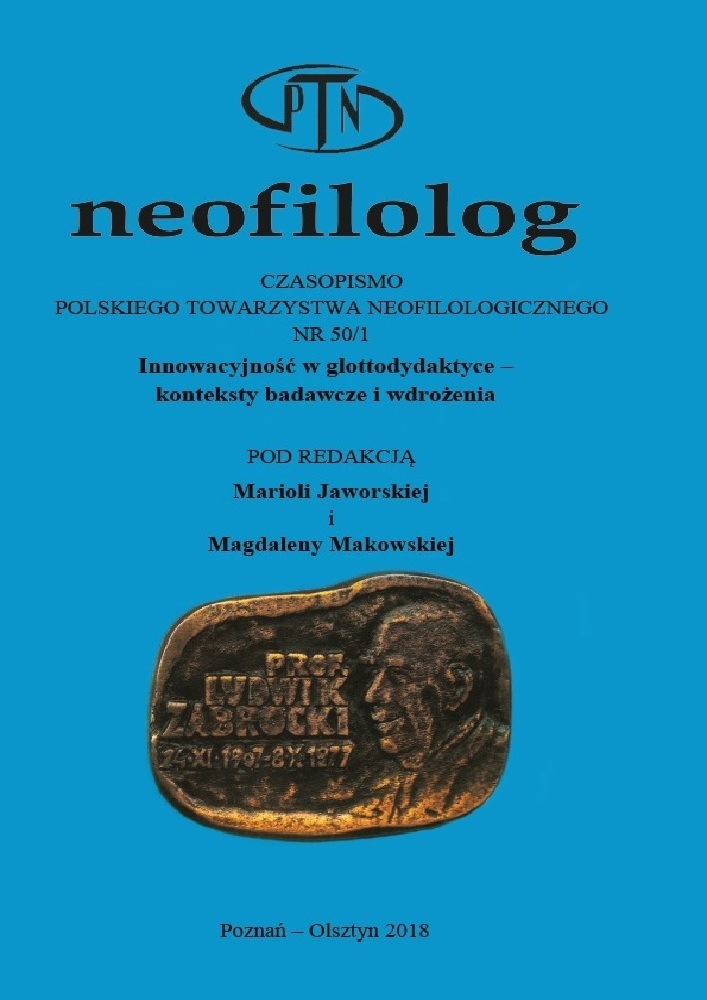Abstrakt
The article presents the language coursebook entitled England and the English by Władysław Kospoth-Pawłowski, published in Poland in 1930. Written a long time before the emergence and development of Content and Language Integrated Learning, the book may be perceived as original, innovative and ahead of its times in terms of the methodology applied. Several references to subsequent educational theories are made to emphasize the originality and the unique, modern nature of the book.Bibliografia
Byram M. (1997), Teaching and Assessing Intercultural Communicative Competence. Clevedon: Multilingual Matters Ltd.
Feuerstein R., Feuerstein R., Falik L.H. (2010), Beyond Smarter: Mediated Learning and the Brain’s Capacity for Change. New York: Teachers College Press.
Gallo D.A., Meadow N.G., Johnson E.L. (2008), Deep Levels of Processing Elicit a Distinctiveness Heuristic: Evidence from the Criterial Recollection Task (In) “Journal of Memory and Language”, No 58, p. 1095-111.
Kospoth-Pawłowski W. (1930), England and the English. Wilno: Księgarnia Świętego Wojciecha w Poznaniu.
Marsh D. (2002), LIL/EMILE – The European Dimension: Actions, trends and foresight potential. Strasbourg: European Commission.
Podhajecka M. (2016), A history of Polish-English / English-Polish bilingual lexicography (1788–1947). Opole: Wydawnictwo Uniwersytetu Opolskiego.
Vygotsky L. (1978), Mind in society: The development of higher psychological processes. Cambridge, MA: Harvard University Press.
Williams M., Burden R.L. (1997), Psychology for Language Teachers – A social constructivist approach. Cambridge: Cambridge University Press.
Zawadzka E. (2004), Nauczyciele języków obcych w dobie przemian. Kraków: Oficyna Wydawnicza Impuls.
Licencja
Prawa autorskie (c) 2018 Czesław Kiński, Jacek Łagun

Utwór dostępny jest na licencji Creative Commons Uznanie autorstwa – Bez utworów zależnych 4.0 Międzynarodowe.
Przedstawiany utwór (artykuł) upubliczniany jest na podstawie umowy z autorem i na licencji Creative Commons Attribution-NoDerivatives 4.0 International (CC BY-ND 4.0).
Użytkownicy mają obowiązek podania wraz z rozpowszechnionym utworem, informacji o autorstwie, tytule, źródle (odnośniki do oryginalnego utworu, DOI) oraz samej licencji;
- bez tworzenia utworów zależnych,
- utwór musi być zachowany w oryginalnej postaci.
Uniwersytet im. Adama Mickiewicza w Poznaniu zachowuje prawo do czasopisma jako całości (układ, forma graficzna, tytuł, projekt okładki, logo itp.).
